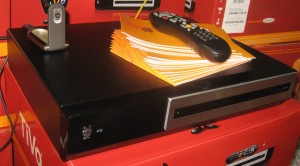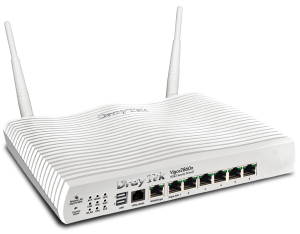Article
The cable box might solve the Internet of Things’ biggest problem | Engadget
My Comments
This article suggested that a set-top box or PVR could do more than select channels or be a customer interface to a pay-TV system.
There is a problem that exists with the Internet Of Things where manufacturers herd their smart-home devices in to “silos” that are controlled by the apps they develop or work on a particular physical link like Z-Wave, Zigbee, Bluetooth or Wi-Fi. This makes it hard to create a heterogenous system based around these devices and either requires many apps on your smartphone or requires many gateway boxes to be connected to your home network.
But it suggested that a cable box or similar device could do a better job by aggregating the different “silos” that exist in the Internet Of Things. They even suggested that an advanced set-top box could work as a control/display surface such as to pause what you are watching and throw up a video of whoever is in the garage, courtesy of a security camera installed therein, when your garage door opener is actuated. Another application I could think of would be that if you start your kettle boiling or coffee dripolator making coffee, you could then start watching your favourite show knowing that a message would pop up on the screen letting you know that the kettle or coffee pot is ready. You could even use the TV remote to adjust the heat or air-con to your liking with the current setting appearing as a pop-up message.
This has been highlighted in the concept of cable companies and telcos offering “multiple-play” services with fixed-broadband Internet, fixed-line telephony, pay-TV and/or mobile telephony in the one package, encouraging customers to have all their “eggs in one basket”. The telco or cable company would then be able to realise that Integrating a home-automation / security service in to their service mix is another way to keep customers loyal to them. This is even if a customer dispenses with a service like pay-TV or fixed-line telephony. Here, a set-top box for their pay-TV and/or an Internet-gateway device like a modem-router that they lease or sell to customers could be the actual device that does the bridging.
A data-security advantage has been found where all bridging functionality is confined to one device because that device can be hardened against cyber attack. But I also look at the fact that two “hub” devices can work in tandem, offering some functionality to each other. In this case, the aforementioned set-top box could work as a rich control / display surface for the modem-router and other devices in the IoT ecosystem as well as serving as a repeater or secondary access point for wireless systems that support this functionality.
At least the idea has been thrown about regarding adding functionality to existing devices like set-top boxes and modem-routers rather than having a home network riddled with dedicated-function devices.


